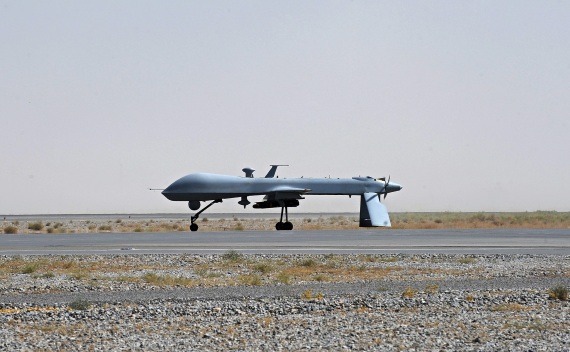Beware the Rise of the Drones
More on:

This post originally appeared as part of the series "Ten Lessons Since the 9/11 Attacks," in which CFR fellows identify the top threats and responses going forward. I highly recommend that you also read the other nine lessons.
After the al-Qaeda bombing of two U.S. embassies in East Africa in August 1998, President Bill Clinton authorized cruise missile strikes against an al-Qaeda complex in Khost, Afghanistan, in an attempt to kill Osama bin Laden. When that operation failed, Clinton pushed senior military officials to develop more innovative options.
In late 1999, Vice Admiral Scott Fry, the Joint Staff’s director of operations, ordered his unit to produce new ways to find bin Laden. The most promising option was the Predator, an unmanned surveillance drone that provided live video coverage of Afghanistan in fifteen test flights before 9/11. To enable lethal strikes, the Air Force armed the Predator by mating it with a reconfigured Hellfire anti-tank missile.
Though the Bush administration’s National Security Council, meeting a week before 9/11, agreed the armed Predator wasn’t ready to be deployed, in the ten years since, armed unmanned drones have become the public face of America’s military counterterrorism policy. Drones have fired missiles in six countries; been controlled by both the CIA and the Pentagon; seen increases in their lethality, loiter time, and overall numbers; and have killed senior al-Qaeda officials, mid-level operatives, at least one U.S. citizen, and innocent civilians. What was developed as a highly specialized covert option has become the default tactic used wherever potential terrorist threats emerge.
In the first prominent use of armed drones, a Predator killed Mohammed Atef, an al-Qaeda military commander, in Afghanistan in November 2001. Most recently, America’s drone wars have expanded into Somalia, where the first unmanned attack there targeted the militant group al-Shabaab. Over the past decade, drones have been most often used over northwest Pakistan, where a reported 258 CIA-controlled strikes have occurred since 2004 against suspected members of al-Qaeda and affiliated groups.
The reliance on drones to mitigate the threat of transnational terrorism will only increase during the Obama administration, since drones have many appealing traits. They have fewer diplomatic costs in terms of assembling coalitions or securing basing rights, keep down the size of the military, create few civilian casualties, do not put U.S. soldiers at risk, and cost less than other military measures. In unveiling the administration’s recent National Strategy for Counterterrorism, John Brennan, assistant to the president for homeland security and counterterrorism, said: "Our best offense won’t always be deploying large armies abroad but delivering targeted, surgical pressure to the groups that threaten us," and noted that with persistent attacks on al-Qaeda, "there will come a time when they simply can no longer replenish their ranks."
This is doubtful. Terrorist groups do not disappear due to military force, no matter how surgical its application. It also overlooks the second-order effects--such as turning public opinion within targeted states against the United States--of a drone-heavy counterterrorism policy, as well as the legal and operational precedent that has been set for the inevitable growth of drone strikes by others.
More on:
 Online Store
Online Store
